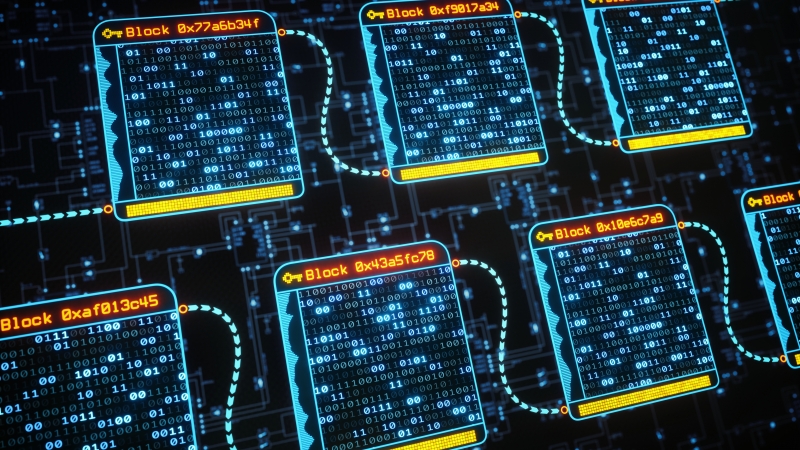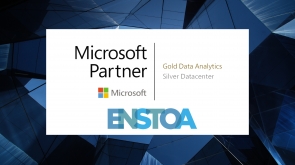
Increasing Project Value with Blockchains and Smart Contracts
Michael Matthews is vice president of strategy and consulting at Enstoa, a global professional services firm that specializes in capital projects improvement. Healthcare and education are among the industries in which they focus their efforts.
Construction projects are designed and built by bringing together multiple companies to perform a myriad of activities. Value comes from funding the right projects and completing them safely and efficiently. Projects that are delivered faster and at a lower cost deliver higher returns on capital employed and create greater value.
Generally speaking, project supply chains are not very well integrated or streamlined. Contracts and corporate systems act like the wall and moat around a castle where everything must pass through a drawbridge and a gate to get in or out. Projects are also inherently risky. Historically, companies have tried to mitigate that risk through the contracts executed between the project stakeholders and the proprietary systems sitting behind company firewalls. Thankfully there is an emerging technology that directly tackles these issues – a combination of blockchains and smart contracts enabled by distributed ledger technology.
What are blockchains and smart contracts?
A blockchain is an immutable system of record (think ledger) for recording transactions and activities that is replicated amongst all parties that are granted access (rather than being stored in one company’s centralized system). Transactions and activities are reviewed and approved by pre-defined rules and then captured into what is referred to as a “block” that is assigned a unique “hash” or code. Each block is placed into the blockchain by “attaching” to the previous block using its unique hashes to cement a unique connection. Once placed into the chain, any change to any block is prevented.
Think of smart contracts as the workflow layer that sits on top of the blockchain. Information regarding the transaction or activity being recorded passes through a pre-defined set of rules before being added to the blockchain. These smart contracts enable each block to be automatically checked against the pre-defined rules before being processed and readily accessible to all the parties of the blockchain.
Embracing emerging technology
Today, there is an enormous amount of data generated on every project. Much of it remains hidden, however, due to either the reluctance or inability to efficiently share the right data with the right people at the right time. A lack of visibility into reliable real-time data results in broken handoffs, errors and omissions, extended lead times, and unexpected bottlenecks.
Blockchains can capture where a resource is at any point in time, identify who has care, custody and control, and record the state that it is in without the barriers imposed by disparate systems and traditional contracts. The information is captured in a peer-to-peer network where transactions are approved through consensus and the relevant information is available to all the stakeholders in the project through the democratization of all the project data.
The value for the project ranges from automated status updates, improved forecast accuracy, scenario planning, streamlined materials management, reduced overhead and indirect costs, rapid issue resolution, accelerated schedules, and improved quality control. With blockchains and smart contracts, benefits accrue up and down the supply chain, from just-in-time planning and inventory management to dispute resolution, reduced wastage and quality controls.
The full lifecycle of typical design and construction projects generate tens of thousands of documents (much still in paper form) from dozens of different companies and the information contained in those documents is often needed by multiple stakeholders. Disciplined coding and tagging can help identify what data and information is contained in the documents, but the data is not readily visible to all project stakeholders.
So what’s the next step? Organizations looking to maximize the value of their capital projects using emerging technologies such as blockchains and smart contracts must address the following questions:
- How can you get all the project stakeholders to embrace blockchains and smart contracts?
- How will you manage access to project data?
- What is the inherent value of the data held by the project stakeholders and how can sharing it benefit each stakeholder?
- What processes and functions exist only to certify trust or facilitate workflow?
The value of blockchains and smart contracts comes from the trust they create and the data they capture and share. Utilizing a combination of both can transform a construction project from a document-centered approach that impairs visibility and speed to a data-centered approach that is visible to all stakeholders in real-time.
About the Author
Vice President of Strategy & Consulting at Enstoa, Michael Matthews has over 25 years of experience managing large capital projects and portfolios in North America, Europe, the Middle East and Asia Pacific. He specializes in strategic business consulting and smart technology solutions that enable leading organizations, worldwide, to spend more strategically on improving operations. For more information, visit http://www.enstoa.com.
Link to the original article here.
Published in HCO News on August 01, 2018
Michael Matthews is vice president of strategy and consulting at Enstoa, a global professional services firm that specializes in capital projects improvement. Healthcare and education are among the industries in which they focus their efforts.
Construction projects are designed and built by bringing together multiple companies to perform a myriad of activities. Value comes from funding the right projects and completing them safely and efficiently. Projects that are delivered faster and at a lower cost deliver higher returns on capital employed and create greater value.
Generally speaking, project supply chains are not very well integrated or streamlined. Contracts and corporate systems act like the wall and moat around a castle where everything must pass through a drawbridge and a gate to get in or out. Projects are also inherently risky. Historically, companies have tried to mitigate that risk through the contracts executed between the project stakeholders and the proprietary systems sitting behind company firewalls. Thankfully there is an emerging technology that directly tackles these issues – a combination of blockchains and smart contracts enabled by distributed ledger technology.
What are blockchains and smart contracts?
A blockchain is an immutable system of record (think ledger) for recording transactions and activities that is replicated amongst all parties that are granted access (rather than being stored in one company’s centralized system). Transactions and activities are reviewed and approved by pre-defined rules and then captured into what is referred to as a “block” that is assigned a unique “hash” or code. Each block is placed into the blockchain by “attaching” to the previous block using its unique hashes to cement a unique connection. Once placed into the chain, any change to any block is prevented.
Think of smart contracts as the workflow layer that sits on top of the blockchain. Information regarding the transaction or activity being recorded passes through a pre-defined set of rules before being added to the blockchain. These smart contracts enable each block to be automatically checked against the pre-defined rules before being processed and readily accessible to all the parties of the blockchain.
Embracing emerging technology
Today, there is an enormous amount of data generated on every project. Much of it remains hidden, however, due to either the reluctance or inability to efficiently share the right data with the right people at the right time. A lack of visibility into reliable real-time data results in broken handoffs, errors and omissions, extended lead times, and unexpected bottlenecks.
Blockchains can capture where a resource is at any point in time, identify who has care, custody and control, and record the state that it is in without the barriers imposed by disparate systems and traditional contracts. The information is captured in a peer-to-peer network where transactions are approved through consensus and the relevant information is available to all the stakeholders in the project through the democratization of all the project data.
The value for the project ranges from automated status updates, improved forecast accuracy, scenario planning, streamlined materials management, reduced overhead and indirect costs, rapid issue resolution, accelerated schedules, and improved quality control. With blockchains and smart contracts, benefits accrue up and down the supply chain, from just-in-time planning and inventory management to dispute resolution, reduced wastage and quality controls.
The full lifecycle of typical design and construction projects generate tens of thousands of documents (much still in paper form) from dozens of different companies and the information contained in those documents is often needed by multiple stakeholders. Disciplined coding and tagging can help identify what data and information is contained in the documents, but the data is not readily visible to all project stakeholders.
So what’s the next step? Organizations looking to maximize the value of their capital projects using emerging technologies such as blockchains and smart contracts must address the following questions:
- How can you get all the project stakeholders to embrace blockchains and smart contracts?
- How will you manage access to project data?
- What is the inherent value of the data held by the project stakeholders and how can sharing it benefit each stakeholder?
- What processes and functions exist only to certify trust or facilitate workflow?
The value of blockchains and smart contracts comes from the trust they create and the data they capture and share. Utilizing a combination of both can transform a construction project from a document-centered approach that impairs visibility and speed to a data-centered approach that is visible to all stakeholders in real-time.
About the Author
Vice President of Strategy & Consulting at Enstoa, Michael Matthews has over 25 years of experience managing large capital projects and portfolios in North America, Europe, the Middle East and Asia Pacific. He specializes in strategic business consulting and smart technology solutions that enable leading organizations, worldwide, to spend more strategically on improving operations. For more information, visit http://www.enstoa.com.
Link to the original article here.
Published in HCO News on August 01, 2018




